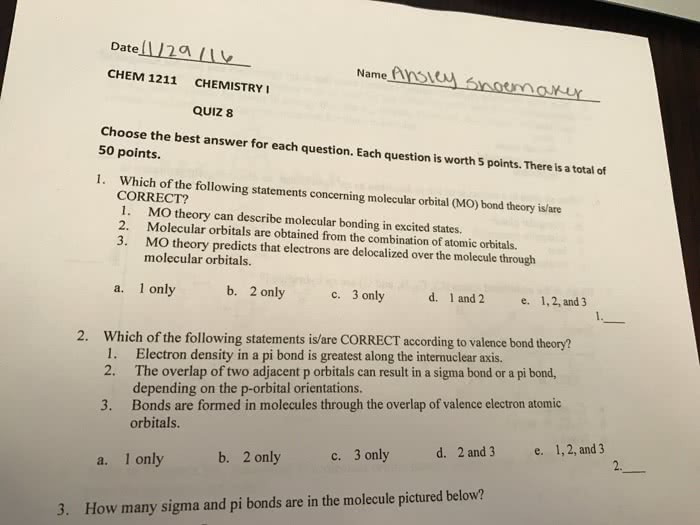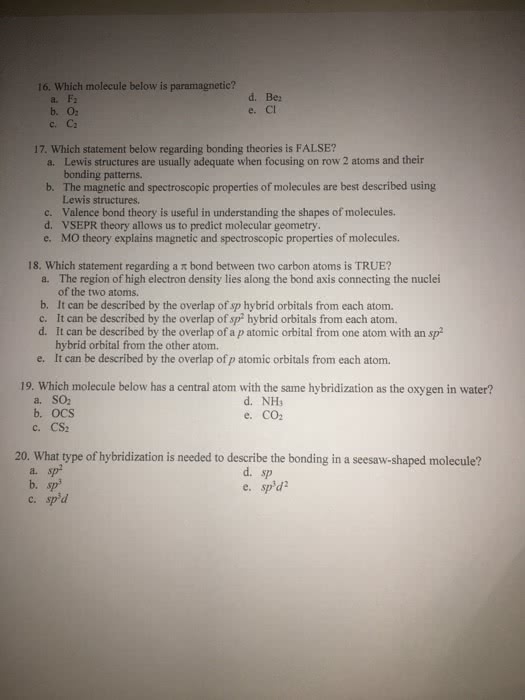CHEM 103 Chapter Notes - Chapter M9Q5: Molecular Orbital Theory, Valence Bond Theory, Magnetic Susceptibility
Document Summary
Molecular orbital theory (m9q5-6: molecular orbital (mo) theory, magnetic susceptibility measures the force experienced by a substance in a magnetic field. When regions of opposite phase overlap, the destructive wave interference decreases electron density and creates nodes: when p orbitals overlap end to end, they create and. * orbitals: if two atoms are located along the x-axis in a. Molecular orbital energy diagrams: for each pair of atomic orbitals that combine, one lower-energy (bonding) molecular orbital and one higher-energy (antibonding) orbital result. Be atom, and on the right are the atomic orbitals for the other be atom. Be atoms has 2 electrons in its valence shell while the other only has one (because the molecule has a +1 charge and therefore lost an electron: bond order. Molecular orbital theory (m9q5-6: the order of a covalent bond is a guide to its strength; a bond between two given atoms becomes stronger as the bond order increases.



